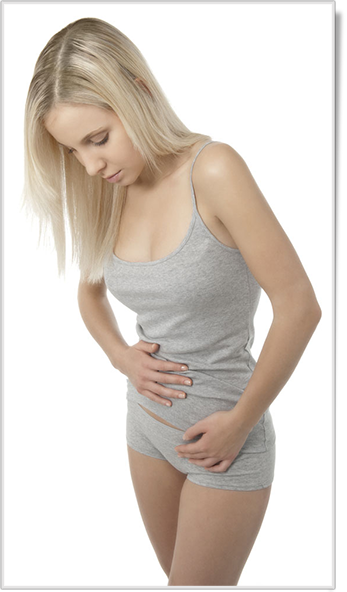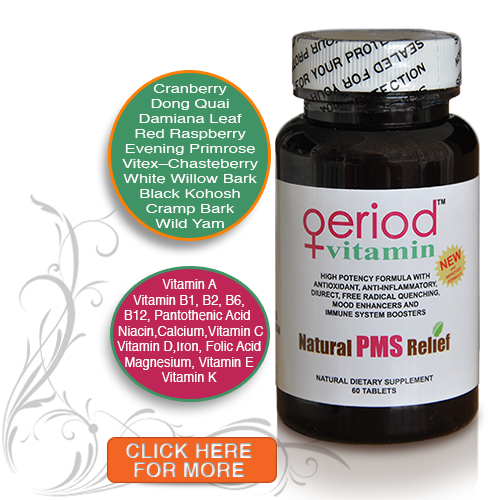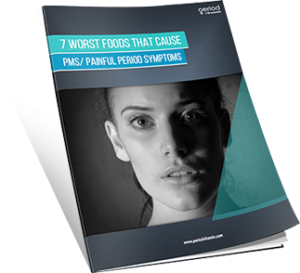Helping the millions of women who suffer with depression, cramps, migraine headaches, acne, anxiety and menstrual pain every month is the job of Chaste berry –formally known as Vitex Agnus Castus. In this article you will find out answers to:
Does vitex help with pms relief and if so what does chaste berry do for pms?
Can I take vitex during my period and do it safely?
How much chaste berry should you take for pms – what is the recommended dosage?
When to take vitex for pms?
In order to better understand the causes and symptoms of pms let’s first look at the menstrual cycle itself, what causes pms and when the symptoms mentioned previously occur. There are many ways to look at the menstrual cycle but we will look at it in the five stages that have been mentioned in other articles.
The Stages of the Menstrual Cycle
Stage One: Premenstrual – In the weeks prior to the beginning of menses or the bleeding ‘period’, a large proportion of women suffer from what has come to be known as pre-menstrual syndrome or pms.
 This syndrome has a wide variety of symptoms including headaches and migraines, abdominal cramps, pain in the thighs and lower back, mood swings, depression, anxiety attacks, acne, insomnia, bloating and fluid retention, as well as weight gain, nausea and vomiting. In the stages (1-3) prior to the start of the bleeding period is when most of these symptoms occur. In the premenstrual stage several of these symptoms begin as the body begins to produce an extra amount of estrogen.
This syndrome has a wide variety of symptoms including headaches and migraines, abdominal cramps, pain in the thighs and lower back, mood swings, depression, anxiety attacks, acne, insomnia, bloating and fluid retention, as well as weight gain, nausea and vomiting. In the stages (1-3) prior to the start of the bleeding period is when most of these symptoms occur. In the premenstrual stage several of these symptoms begin as the body begins to produce an extra amount of estrogen.
Stage Two: Follicular – in this stage the production of estrogen greatly increases flooding the system and causing the hormonal imbalance that leads to so many of these pms symptoms. This is the stage that sees the maturation of the follicle and the buildup of the uterine lining to ready it for the embedding of the egg once it is fertilized. The most prevalent symptoms in this stage include fluid retention and bloating, cramping and mood swings.
Stage Three: Luteal – this stage sees the decrease in estrogen and the increase in progesterone. This leads to an increase in prostaglandins that can cause inflammations and pain. Back pain, joint pain, cramping and thigh pain are prominent. This stage begins with ovulation and ends with menses. In this stage there are still mood swings, depression and anxiety attacks. Vomiting, nausea and diarrhea are also possible.
Stage Four: Period/Bleeding – this stage the body flushes out the unfertilized eggs, excess uterine lining, excess fluid and blood. Most of the symptoms of pms disappear in this stage because the hormones begin to balance out again.
Stage Five: Post Menstrual – this stage should be a period of rest for the body before the premenstrual stage starts again. However there are many women who also suffer from these same symptoms after their period ends.
In these stages the symptoms of pms that can be treated with chaste berry include mood swings and depression, headaches and migraines, acne, and other forms of menstrual pain including sore breasts. Chaste berry (Vitex Agnus Castus) is also known as Abraham’s Balm or Monk’s Pepper. This herb originated in the Mediterranean and it grows primarily in warm climates but there is also a moderate temperature zone variety. It has been used for centuries as a treatment for pms type symptoms and as both an anaphrodesiac and an aphrodisiac.
“Clinical studies have demonstrated effectiveness of standardized and controlled medications produced from extract of the plant in the management of premenstrual stress syndrome (PMS), and cyclical breast pain (mastalgia). The medication is recommended in Germany.” http://en.wikipedia.org/wiki/Vitex_agnus-castus
“A study has found that treatment of 20 healthy men with higher doses of Vitex agnus-castus was associated with a slight reduction of prolactin levels, whereas lower doses caused a slight increase as compared to doses of placebo. A decrease of prolactin will influence levels of Follicle-stimulating hormone (FSH) and estrogen in women; and testosterone in men. Dopaminergic compounds (diterpenes with prolactin-suppressive effects that were almost identical in their prolactin-suppressive properties than dopamine itself) present in Vitex agnus castus seem likely to be the clinically important compounds which improve premenstrual mastodynia and possibly also psycho-somatic symptoms of PMS.
Flavonoids, alkaloids, diterpenoids, vitexin, casticin and steroidal hormone precursors have been identified in the chemical analysis of Vitex agnus-castus.[20] It is believed that some of these compounds work on the pituitary gland which would explain its effects on hormonal levels. A study has shown that extracts of the fruit of VAC can bind to opiate receptors; this could explain why intake of VAC reduces PMS discomforts.”
wikipedia.org/wiki/Vitex_agnus-castus
Vitex is said to positively treat acne, headaches and migraines, inflammation, nausea, diarrhea and joint pain because it assists in restoring the hormonal balance that is upset during pms. It is important that if vitex/chaste berry is used for treatment of these, that the dosage or compound has been positively reviewed by many users. The proper dosage is really important. Make sure that the product you choose to use has been used successfully by many women before you.
Avoid any compounds that report bad side effects by multiple users. As noted in these studies, chaste berry has been used in Europe for over fifty years to treat the symptoms of pms. It is currently an approved medication in Germany for pms symptoms. It is not known to have any negative interactions with prescription drug medications.
The most common dosage of chaste berry when taken by itself for pms is between 80 and 220 milligrams. Every manufacturer has their own compound and recipe so it is important to look at the various products. It is found in pill form or also as an extract with the ground berries in it.
“According to the Memorial Sloan-Kettering Cancer Center, this herb contains naturally occurring hormones including progesterone, testosterone and androstenedione as well as compounds such as flavonoids, volatile oils and alkaloids. These potent medicinal ingredients are thought to help balance the effects of surging hormones during the menstrual cycle that cause bleeding and abdominal cramping.” livestrong.com
“Two surveys of its efficacy were done on 1,542 women who took a liquid extract (42 drops daily) for spans up to 16 years. The patients’ doctors rated its effectiveness as very good, good or satisfactory in 92% of cases. Further clinical confirmation of its effectiveness for PMS can be found in the work of Hardy and Gaster.”
depression.about.comAccording to the Mayo Clinic, “Clinical trials suggest that chaste berry may reduce irritability, mood swings, anger and headaches associated with PMDD “ ( premenstrual dysphoric disorder) mayoclinic.com/health
What is most often advocated by the experts and confirmed by the user is that chasteberry (vitex) is most effective when blended with other vitamins, minerals and herbs into a compound such as Period Vitamin. None of these studies indicate an appropriate or acceptable dosage of vitex agnus castus for pms symptoms with recommendations that range from 3 to 5 milligrams per day if you take an extract or 600 milligrams three times daily if you eat dried fruit. Fluid extracts and tinctures have their own recommended dosages. You can see that this can be very confusing for the user.
To avoid all that it is easier and better to use a compound like Period Vitamin because the dosage is standard and the effectiveness is increased by combining it with other herbs, minerals and vitamins that have also been shown to have an impact on the symptoms of pms. Period Vitamin is an excellent example of this as in addition to chaste berry (vitex agnus castus) it contains a wide spectrum of vitamins, herbs and minerals to treat a wide spectrum of pms symptoms. It is also highly acclaimed by a multitude of women who are using it.
 Period Vitamin is taken on a schedule that allows it to be built up in the body’s system before it is needed. The recommended use is take two tablets every day for three months but every month you add a third pill during the menstrual cycle. After that first three months of use take two vitamins every day for the week before the menses/period/bleeding stage of the cycle and take two daily during the actual ‘period’ or menses stage.
Period Vitamin is taken on a schedule that allows it to be built up in the body’s system before it is needed. The recommended use is take two tablets every day for three months but every month you add a third pill during the menstrual cycle. After that first three months of use take two vitamins every day for the week before the menses/period/bleeding stage of the cycle and take two daily during the actual ‘period’ or menses stage.
Period Vitamin contains these herbs:
Evening Primrose Oil, Chaste berry, Black Cohosh, Wild Yam Root, Cranberry, White Willow Bark, Cramp Bark, Red Raspberry and
Period Vitamin contains these vitamins:
Vitamin E, Vitamin B complex, Vitamin C, Vitamin K, and Vitamin A.
Period Vitamin contains these minerals:
Calcium, Magnesium, Iron, Niacin, Pantothenic acid and Folic Acid.
This combination of vitamins, minerals and herbs has been very successful in treating the specific combination of pms symptoms that includes:
Cramping, bloating, mood swings, decreased libido (sexual desire), migraines, swollen and tender breasts, acne, weight gain, joint pain, insomnia, anxiety attacks, depression, back pain and fatigue.
So though chaste berry (vitex agnus castus) is a very effective herb for some pms symptoms the best bet is to try a compound like Period Vitamin.


